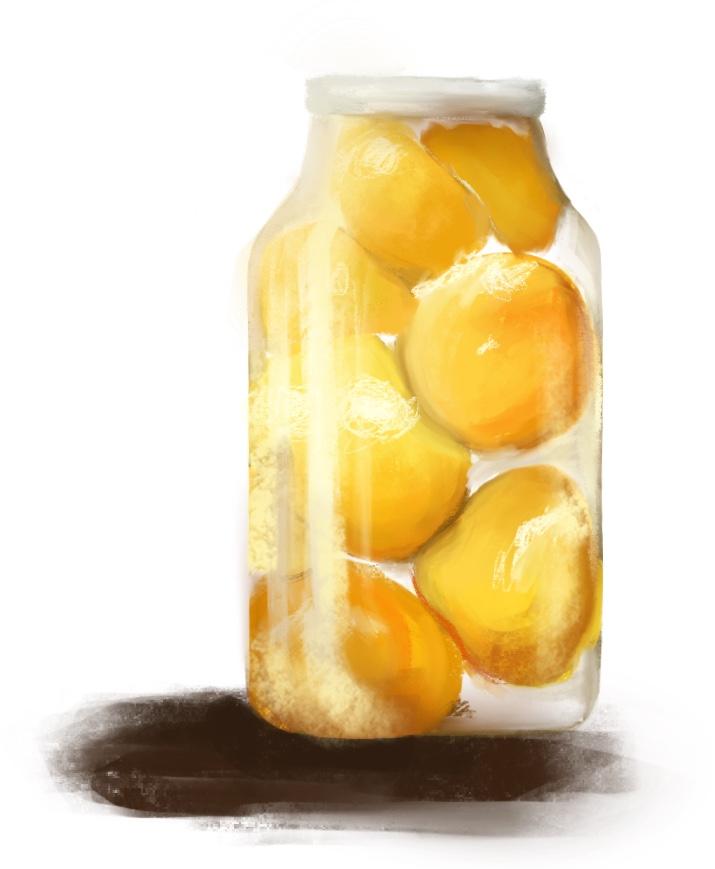by Isha Karim (‘22) | February 11, 2022

As our mild California winter comes to an end, spring flavors are back in season. Spring cooking demands citrus, leafy greens, and nutty notes of almond. For me, the essential spring ingredient is a lemon. Just a hint is enough to brighten any dish or drink. From mild Amalfi lemons to sweeter Meyers, lemons vary widely in acidity and sharpness to differentiate any flavor profile.
While peak lemon season in California lasts all year round, not all regions of the world enjoy such a benefit. As such, the task of preservation, whether of lemons or other produce, has led to the creation of many of the world’s pickled delights. My first adventure in pickling and preserving was with lemons, specifically a Moroccan-style preserved lemon widely used in vegetable tagines and regional meat dishes. While lemon pickles appear in dishes from India to Cambodia, the mildly tart, yet intensely lemony flavor of the Moroccan variety is what makes it unique.
With a sterile mason jar and five Meyer lemons in hand, I undertook the daunting adventure of pickling. While Moroccan preserved lemons call for the regional doqq or bouserra varieties, I prefer the dependable Meyer lemon for its smooth skin and sweeter flavor. After quartering my lemons and packing them in layers of salt, I prepared to add the Safi mixture, a spice blend with origins in the Atlantic coastal city of Safi, Morocco. To prepare my Safi mixture, I first toasted my spices: cinnamon sticks, cloves, coriander seeds, black peppercorn, and a bay leaf.
Once fragrant, I blitzed them in a spice blender to a fine powder. Once the Safi mix was ready, I added a generous helping of the spices to the lemon layers. Looking in the glass jar, I could see the yellow lemon juice speckled with deep red-brown flecks of the Safi spices. Finally, I left my lemons to ripen in a warm place in the sterile mason jar, shaking every few days. Each day, I could see the lemon juice deepen in color to resemble the traditional Moroccan pickling liquid. From a bright yellow to deep dijon color, the lemons become more tender and acidic with each day on my sunlit countertop.
After thirty days, my lemons were finally ready to be put to use. Opening the jar, I was immediately hit by the familiar smell of lemons, but also spice and salt from the flavorings.
To fully understand the versatility of preserved lemons, I prepared them in two ways: a salad and Moroccan vegetable tagine. With wooden tongs, I carefully avoided any contamination and removed three quartered lemons from the jar. Using a knife (or a spoon, the flesh separates easily), I sliced my lemons to separate the rind from pulp.
I blended the pulp into a thick, watery paste to add to my tagine, a succulent, slowly simmered stew integral to Sephardic cuisines. After cooking chopped potatoes, carrots, and garlic in a Dutch oven, I liberally sprinkled chopped dried apricots and tangy tomatoes. To complement the sweetness of the apricots, essential to Moroccan tagine, I finished the stew with the pulp of the preserved lemons. The spicy, vinegary lemons held their own against the hearty, sweet stew to make a more than satisfying dinner. For the coming spring months, preserved lemons are sure to be the stars of Mediterranean salads, amalgamations of kalamata olives, romaine lettuce, Persian cucumbers, and heirloom tomatoes.
Dicing my rinds, I added them to a vinaigrette of olive oil, sumac, and existing brine and let sit for fifteen minutes. Roughly chopping red onions, tomatoes, and romaine lettuce, I diced kalamata olives and hand-tore feta before tossing the ingredients in my dressing. In dishes like these, preserved lemons brighten salads with the expected acidity but also the punchy vinegar and spicy Safi flavors. Citrusy and spicy, these lemons are the mouthwatering twist your salads need. Beyond the acid, these lemons upstage the traditional spice and vinegar, to give your guests a look of puzzlement and surprise that a simple squeeze of lemon can’t afford.








































































